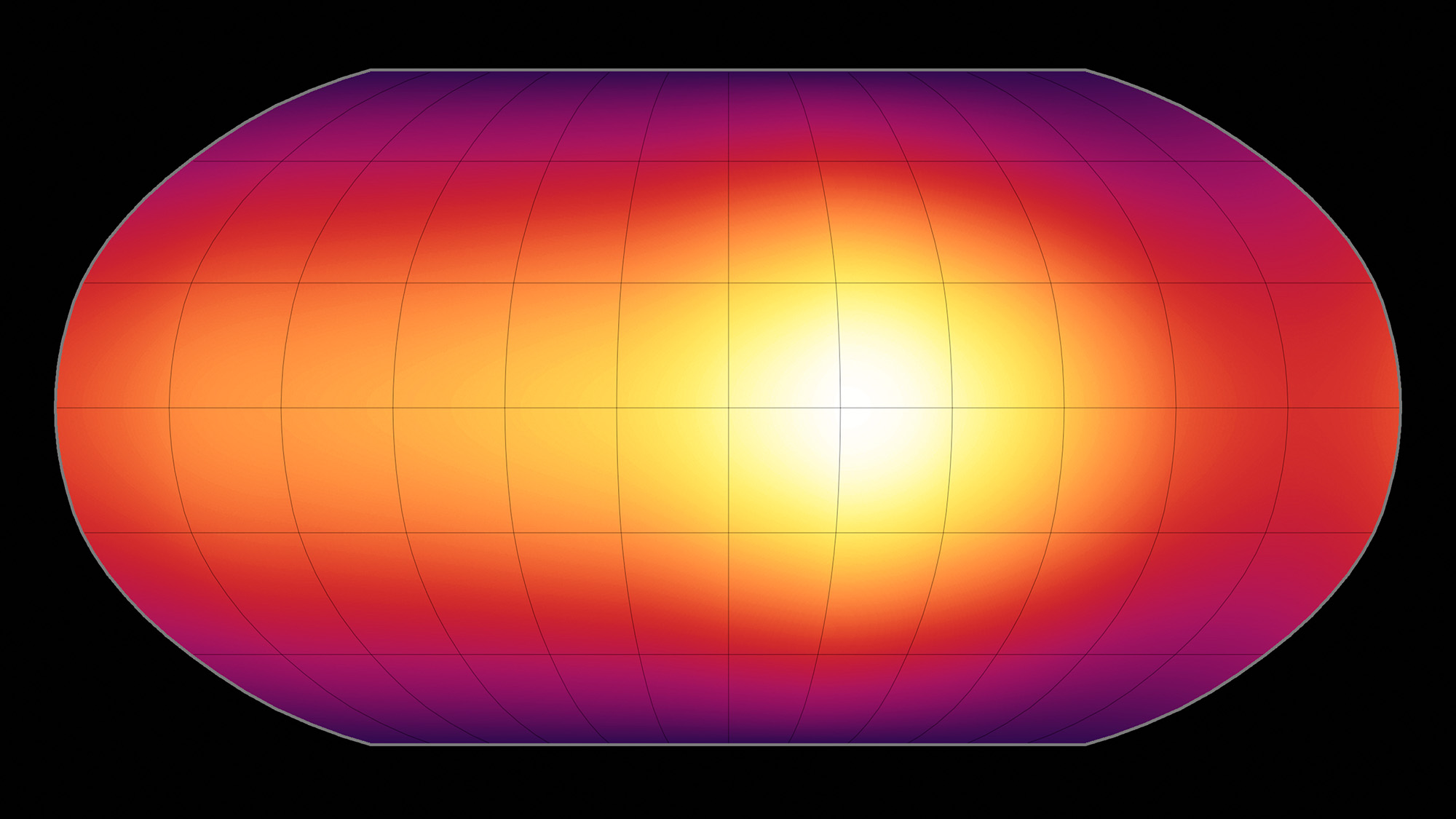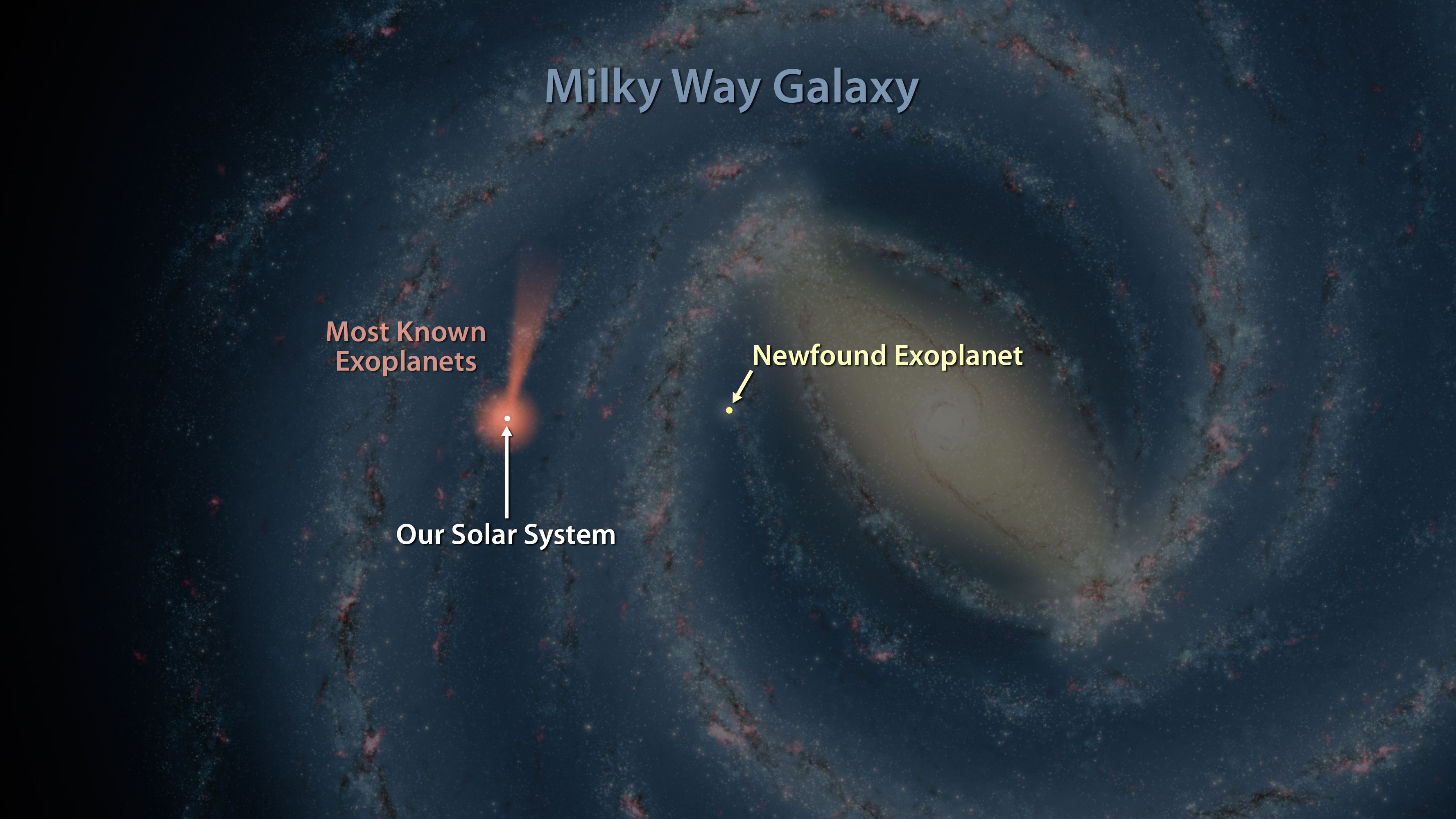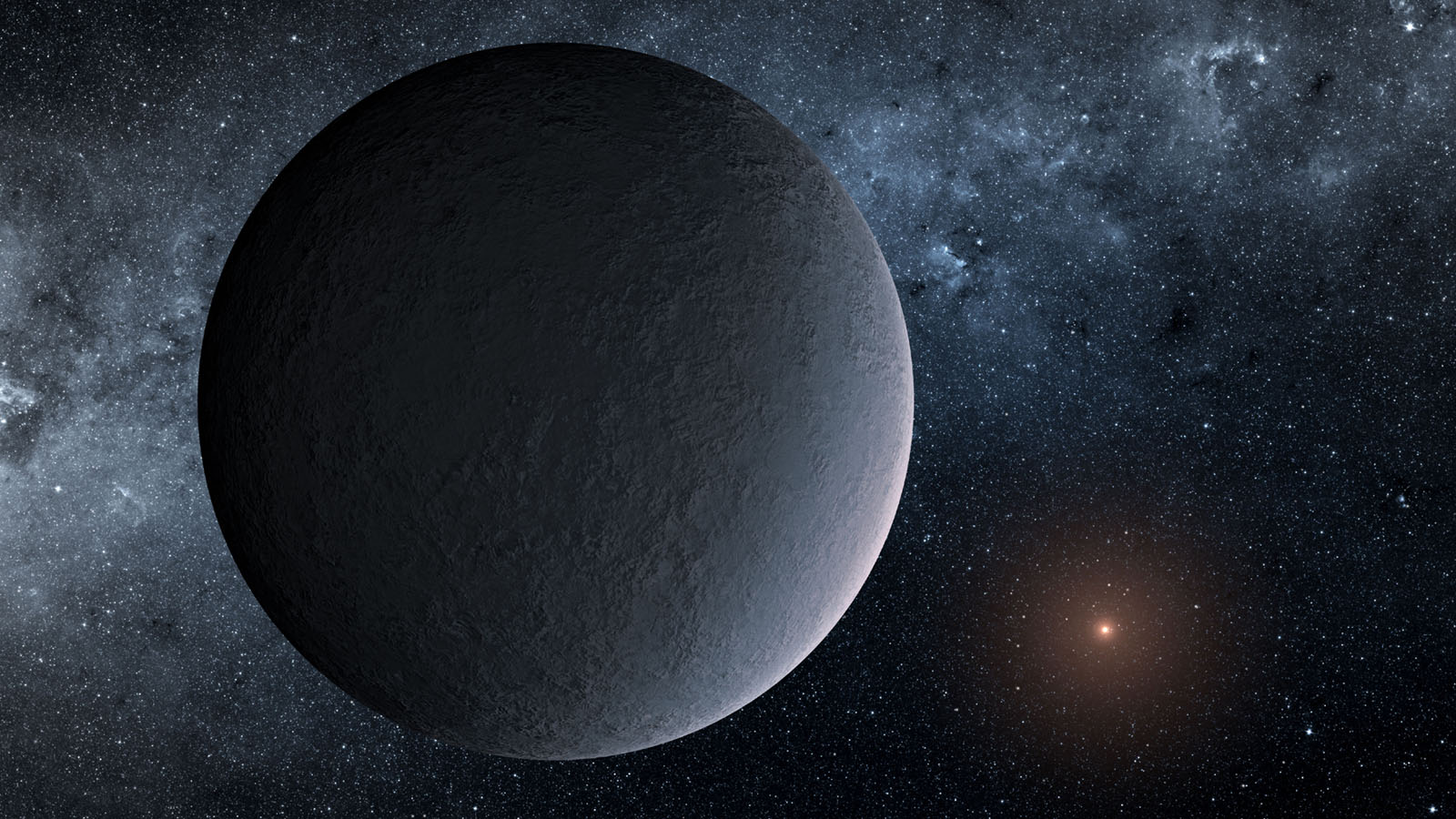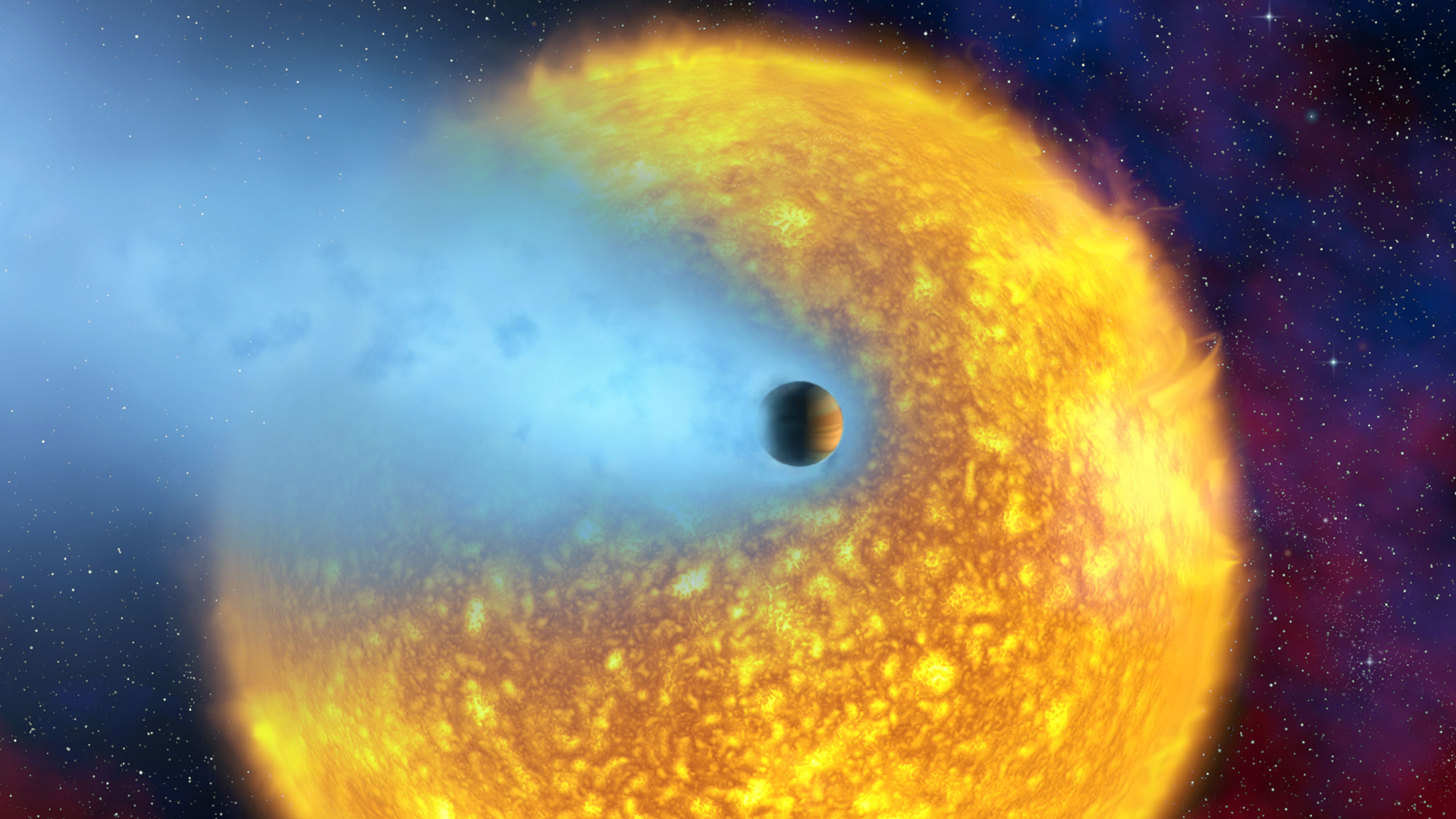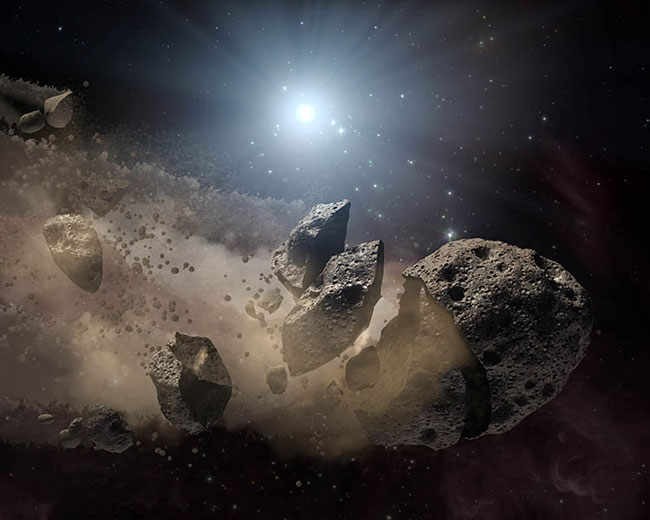The Spitzer Space Telescope's greatest exoplanet discoveries of all time
NASA's Spitzer Space Telescope, which launched in August 2013, was supposed to last only 2.5 years, but it persisted for an incredible 17. On Jan. 30, NASA will shut down the telescope and end the mission, wrapping up almost two decades of work by the orbiting observatory.
One of Spitzer's greatest contributions was its discoveries about exoplanets, or worlds beyond our solar system. Although exoplanet study was not Spitzer's primary task, the telescope made some incredible planetary finds. Here are 10 of the greatest ones, as selected by NASA.
Related: The infrared universe seen by NASA's Spitzer Telescope (gallery)
Video: NASA's Spitzer Space Telescope Mission Is Ending - Highlights
Weather on another planet
Spitzer was equipped with infrared vision and an accurate way of targeting stars, both of which allowed the telescope to look closely at a planet and learn about its weather. These two capabilities allowed Spitzer to map "roaring winds" circling the gas giant exoplanet HD 189733b in 2007, NASA officials said.
This research showed that Spitzer could be repurposed for interesting exoplanet science, even though the field was just getting started when Spitzer launched. That's because exoplanets weren't confirmed until the 1990s, while Spitzer was being designed.
Full story: Scientists map weather on distant world
Several Earth-size planets
Here at Space.com, we've written extensively about the incredible TRAPPIST-1 system, where seven Earth-size planets orbit a single star. Current research suggests that three of the planets may be habitable, because they orbit in an area of the star that has enough heat to allow for liquid water on their surfaces.
Breaking space news, the latest updates on rocket launches, skywatching events and more!
Spitzer discovered five of the planets after looking at the star for about 500 hours. It further allowed scientists to learn about the size and mass of the planets, which helps scientists determine whether the planets are rocky or gaseous.
Full story: Exoplanet Tour: Meet the 7 Earth-size planets of TRAPPIST-1
A distant exoplanet
Spitzer teamed up with a ground-based telescope to spot a planet very, very far away — a mind-boggling distance of 13,372 light-years. Most exoplanets discovered to date are clustered in a sphere within 1,000 light-years from Earth.
Scientists found this distant world, called OGLE-2014-BLG-0124Lb, using microlensing. This technique uses gravitational lensing (the bending of light by massive objects) to spot faraway cosmic objects. The find was announced in 2015. "The discovery ... provides one more clue for scientists who want to know if the population of planets is similar throughout different regions of the galaxy," NASA said in a statement.
Full story: Newfound alien planet is one of the farthest ever detected
Brown dwarfs
Some planets orbit stars that are more exotic than ours. In 2017, scientists announced that Spitzer and the Korea Microlensing Telescope Network (KMTNet) had found an Earth-size planet, OGLE-2016-BLG-1195Lb, orbiting a probable brown dwarf star.
Brown dwarfs, sometimes called failed stars, are objects that are larger than planets but just below the threshold necessary for them to be stars that undergo fusion and burn fuel, like our own sun does. This planet is likely not habitable, but it shows scientists the range of conditions under which planets can form.
Full story: Alien planet with Earth's mass discovered ... But it's an 'iceball'
Alien clouds
Spitzer's powerful gaze allowed scientists to see clouds forming on other planets, which the telescope did during a collaboration with NASA's Kepler space telescope in 2013. Spitzer and Kepler observed another large exoplanet called Kepler-7b, which is about the size of Jupiter.
"The planet is marked by high clouds in the west and clear skies in the east," NASA said in the statement. Spitzer also detected Kepler-7b's temperature, estimating it to be between 1,500 and 1,800 degrees Fahrenheit (815 to 982 degrees Celsius). Spitzer also made another big find: It showed that light from the star near Kepler-7b is actually bouncing off the top of the western clouds.
Full story: Clouds on alien planet mapped for 1st time (image)
An oozy, lava-caked super-Earth
Back in 2012, Spitzer scientists announced a bizarre find from studying an exoplanet slightly larger than Earth: The exoplanet 55 Cancri e likely has an ocean made of lava.
55 Cancri e is also tidally locked to its parent star so that one side is perpetually roasting, soaring to 4,400 F (2,427 C). The night side is a little cooler, at about 2,060 F (1,127 C).
Full story: Super-Earth exoplanet's atmosphere characterized for 1st time
Water in a "hot Jupiter" atmosphere
In 2007, astronomers using the Spitzer Space Telescope announced that they had found water in the atmosphere of the exoplanet HD 209458b — work that has been confirmed by observatories such as the Hubble Space Telescope. The Jupiter-size planet orbits very close to its star, giving it the name "hot Jupiter."
This was the first time that the telescope managed to identify molecules in the atmosphere of a distant world. Spitzer found the molecules by getting the infrared spectrum of the planet and the star, and then capturing just the star's spectrum while the planet passed behind. "Subtracting the latter from the former reveals the planet's own rainbow of infrared colors," NASA said in the statement.
Full story: Water found in extrasolar planet's atmosphere
Hot Jupiter studies
Spitzer and Hubble pursued the science of HD 209458b and nine other hot Jupiters to learn more about how much water is in their atmospheres. Though water was detected in at least some of these exoplanets' atmospheres, it was less than scientists expected based on models at that time.
In 2015, the team announced one possibility: The atmospheres of these exoplanets have clouds and haze, which can hide water from the gaze of telescopes.
Full story: Clouds solve mystery of missing water on 'hot Jupiter' planets
Dusty dead stars
In 2009, Spitzer turned its attention to white dwarfs, or dim stellar corpses that foreshadow the sun's ultimate fate — once our sun runs out of gas to burn, it will slough off its layers and will leave a cooling, small remainder star called a white dwarf.
The telescope examined six white dwarfs pummeled with asteroids and discovered that the dust contained olivine, a glassy silicate mineral that is common on Earth. Finding such minerals helps scientists better understand how Earth formed, and how common its elements and minerals are in other parts of the universe.
Full story: Dead stars harbor asteroids
An epic asteroid crash
Spitzer was doing routine scans of a young, sunlike star called NGC 2547-ID8 when it found something strange between August 2012 and January 2013: a surge of dust glowing in infrared light.
From so far away, it's hard to tell exactly what happened, but scientists suggested that the dust cloud may have emanated from a large crash between asteroids. Spitzer's observations "give us a glimpse into the violent process to tell us more about the formation of rocky planets like Earth," NASA said in the statement.
Full story: Smash! Aftermath of colossal impact spotted around sunlike star
- NASA is turning off the Spitzer Space Telescope. Its infrared eye changed our view of the universe.
- Space telescopes of the future: NASA has 4 ideas for great observatory to fly in 2030s
- Digital calendar shows best images from NASA space telescope
Follow Elizabeth Howell on Twitter @howellspace. Follow us on Twitter @Spacedotcom and on Facebook.


Elizabeth Howell (she/her), Ph.D., was a staff writer in the spaceflight channel between 2022 and 2024 specializing in Canadian space news. She was contributing writer for Space.com for 10 years from 2012 to 2024. Elizabeth's reporting includes multiple exclusives with the White House, leading world coverage about a lost-and-found space tomato on the International Space Station, witnessing five human spaceflight launches on two continents, flying parabolic, working inside a spacesuit, and participating in a simulated Mars mission. Her latest book, "Why Am I Taller?" (ECW Press, 2022) is co-written with astronaut Dave Williams.
